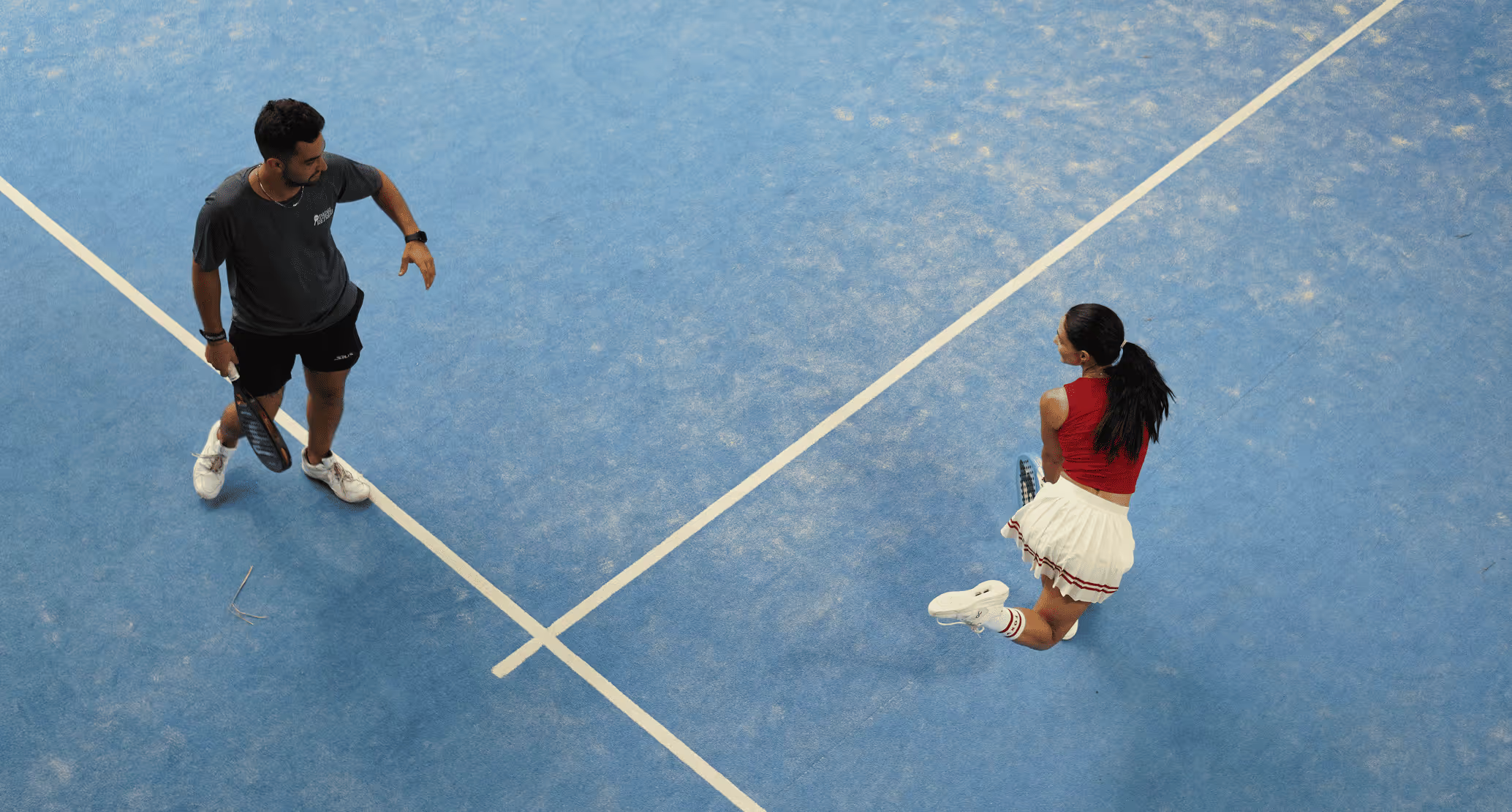06/10/2025
PADEL RULES, COURTS, AND TRAINING: THE COMPLETE GUIDE
Padel has quickly become one of the most talked-about sports in the world; a blend of tennis, squash, and pure social fun. Whether you are preparing for your first game or looking to refine your technique, understanding the fundamentals of padel will help you play smarter, move better, and enjoy every rally.
This complete guide covers everything you need to know: the basic rules, court setup, and key training methods used by both beginners and professionals.

WHAT IS PADEL
Padel is a doubles racket sport played on an enclosed court roughly one-third the size of a tennis court. The game combines the strategy of tennis with the pace and rebound dynamics of squash. It is easy to learn, making it ideal for all ages and skill levels, yet it offers endless tactical depth for those who want to master it.
BASIC PADEL RULES
While padel shares similarities with tennis, a few distinct rules make it unique:
1. Scoring
- Padel uses the same scoring system as tennis: 15, 30, 40, and game.
- Matches are usually best of three sets, with six games per set.
2. Serving
- Serves are underhand and must bounce once before being hit.
- The ball must land in the opponent’s diagonal service box.
- If the ball touches the net and lands correctly, it is replayed (a let).
3. Walls and Play
- After bouncing once on the ground, the ball can rebound off the glass or fence before being returned.
- Players can use their own walls to return shots, adding a strategic layer that makes the game fast-paced and exciting.
4. Faults and Points
- The ball must always bounce before hitting the wall on the opponent’s side.
- If it hits the wall first or goes out of bounds without bouncing, it’s a fault.
- These simple yet dynamic rules create long rallies and keep every player engaged from start to finish.
UNDERSTANDING THE PADEL COURT
A padel court is designed to encourage continuous play and quick reactions.
- Dimensions: 10 metres wide by 20 metres long.
- Enclosure: The court is surrounded by glass and metal mesh walls. The glass allows rebounds, while the mesh prevents the ball from leaving the court.
- Net: Divides the court into two equal halves, similar to tennis, with a height of 88 cm in the centre.
- Surface: Typically artificial turf or synthetic material, providing good traction and ball control.
- Lighting: Outdoor courts often feature full LED lighting for evening play.
The enclosed structure and smaller dimensions make padel faster and more tactical than tennis, with a strong emphasis on positioning and teamwork.
ESSENTIAL EQUIPMENT
To get started, you will need:
- Padel racket: Solid (no strings) with perforations to reduce air resistance. Rackets vary by weight and balance depending on player level.
- Padel balls: Slightly softer and with lower pressure than tennis balls.
- Shoes: Court shoes with lateral support to allow quick direction changes.
- Grip and wristband: Optional accessories to enhance comfort and control.
EXPERIENCE PADEL IN PARADISE
Learning or perfecting your game in a world-class setting transforms the entire experience. Bali and Mykonos offer ideal weather, luxury facilities, and a vibrant international community of players.
The Padel Retreat combines daily coaching, match play, and recovery sessions with spa treatments and gourmet dining; the ultimate environment to train, recharge, and connect.




